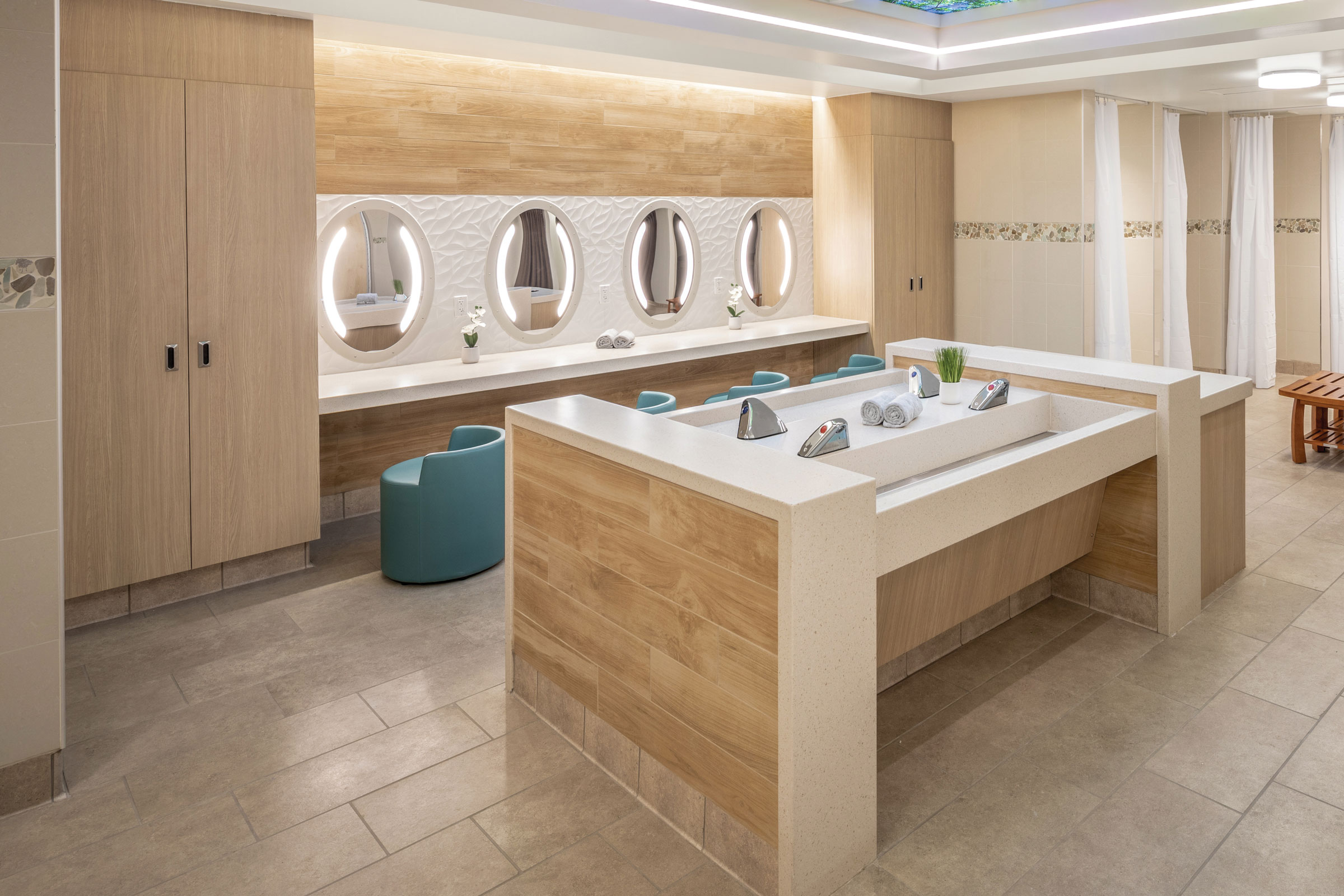Story at a glance:
- Patient-centric lighting innovations from Visa Lighting offer more design possibilities for behavioral health facilities and more.
- Say goodbye to fluorescent and incandescent lights and hello to ambient light and LEDs that feel equally at home in hospitality.
- Minimalist, attractive designs like that of Gig give patients back some control, adding to their comfort.
It’s no secret that a lot of health care lighting is designed for function more than aesthetics, but some lighting designers are asking—why can’t we do both?
That’s exactly what Milwaukee-based and American-made Visa Lighting is doing. “Visa has been doing heath care lighting for years now, and we entered this market primarily because of our aesthetic quality,” says Laurie Emery, a longtime lighting designer who joined Visa Lighting in 2017. She says architects and interior designers saw a great need for lighting products that were both beautiful and provided the performance needed. “They recognized that Visa Lighting has that experience—providing good performance and aesthetics.”
As the industry moves away from fluorescent and incandescent lights into the LED world, Visa Lighting is pushing the envelope even more with innovative health care lighting design that would feel equally at home in a high-end hotel. It’s all part of an exciting shift toward flexible health care environments across the US.
Aesthetics
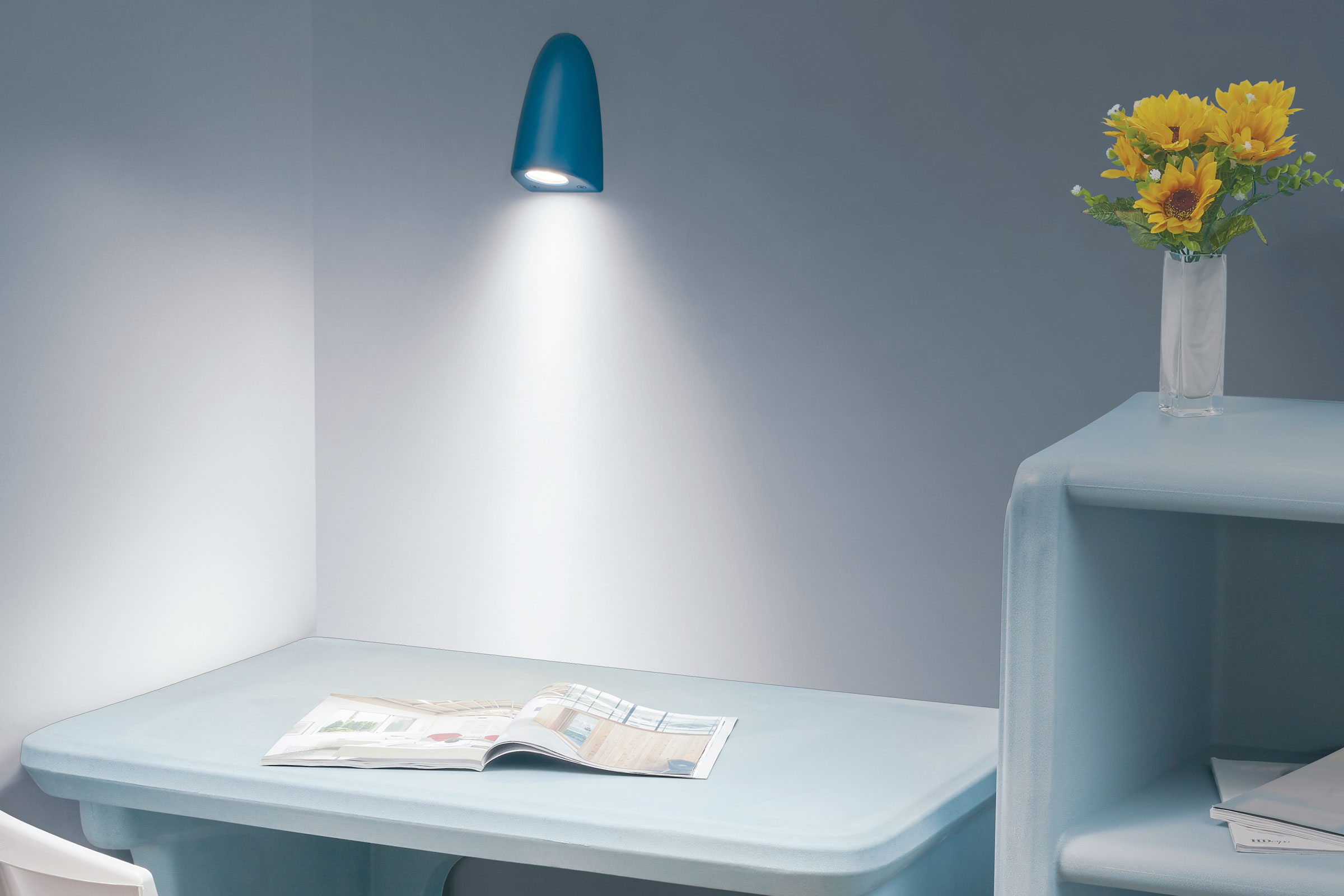
Gig is the first task light designed for behavioral health applications. With a IK10+ (100 joules) high abuse impact rating, an impact-resistant polycarbonate lens, and anti-ligature construction, this compact task light is designed for patient and caregiver safety. Photo courtesy of Visa Lighting
Let’s start with products like Sole and Gig. Sole is the first lighted mirror designed for behavioral health applications, and Gig is the first task light. Emery points to behavioral health care settings’ particular need for safe, aesthetically pleasing lighting solutions like these.
While backlit mirrors were very popular in the hospitality world, Visa Lighting asked: How do we put a mirror of that quality into a behavioral health setting where safety is also a concern? They developed an unbreakable mirror that was recessed into the wall for safety. “We went with a polycarbonate product that could be mirrorized. We made it recessed in the wall so it could be completely flush with a framework that could not become a ligature issue,” Emery says. “At the same time we were able to create lighting behind that mirror, which not only added a vanity lighting function but also made it look really elegant.”
Sole launched in 2018 with completely tamper-proof hardware. “You try to create a product that looks very at home in hospitality—like in a nice, high-end hotel—but at the same time provide all these other elements needed for that environment. Nobody else does that,” Emery says.
Then there’s the minimalist, attractive design of Gig—developed as a task light that patients can even control themselves, adding to their comfort. “They obviously don’t have a lot of control in their environment,” Emery says, but this gives back some control.
“Some of the behavioral health line we developed evolved out of our current product line because there was a need,” she says, adding that designers desperately wanted products that didn’t feel institutional. “The people who work with behavioral patients were really concerned about the environment feeling like a prison, so they came to us because we had aesthetic products that could meet that need.”
Visa lighting continues to focus on ways to apply this comfortable, hospitality-like formula to other areas of hospital, too. Another example of this is the Symmetry and Serenity multi-function recessed ceiling mounted luminaires that include color-changing, ambient, and nightlight modes. Some of the functions are designed to be controlled remotely from outside the room. The color-changing feature can be controlled by health care professionals to optimize conditions for patient treatment and healing. Emery says they’re aesthetically pleasing, and by including several features in a single product, they are also cost-effective.
Detail
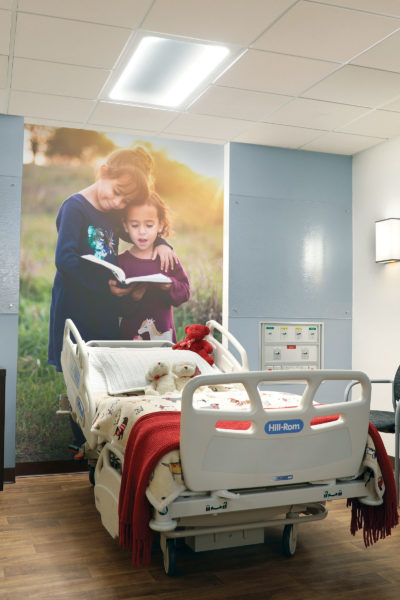
The Harmony 2×4 overbed light features a unique cove-like curved lens design. Photo courtesy of Visa Lighting
Harmony—a 2×4 overbed light with a unique cove-like curved lens design—is Visa Lighting’s most recent health care debut, launched in March 2022. “Harmony is the culmination of our experimentation and exploration of what value a patient room lighting product could provide,” says Hans Nielsen, senior industrial designer at Visa Lighting.
Nielsen was instrumental to this new design, which came about after many conversations with health care specifiers and professionals. “In an effort to create that soft, welcoming ambience, we looked to indirect lighting and cove lighting for inspiration,” Nielsen says.
Emery says ceiling spaces in hospitals are also prime real estate, and remodels can be even more difficult. “Older hospital construction didn’t have high ceilings, so in some cases you’re fighting with ductwork and electrical cables and the like,” she says.
Visa developed products like Harmony and other overbed products with a thin profile to help reduce that ceiling footprint. The Harmony 2×4 features multiple light modes for patient comfort and caregiver efficiency, including soft ambient lighting, higher intensity reading illumination, and directional exam lighting. The recessed ceiling fixture distributes light inward from the perimeter of the concave lens.
Nielsen says it’s a challenge to design a true cove light that’s also easily cleaned and functional in a patient room—and working within a grid format is constraining. Visa Lighting got creative. “We started with the experience we wanted to create. We wanted the fixture to feel soft and comfortable but also meet or exceed the technical requirements. That’s how we created Harmony.”
He says most lighting manufacturers create ambient lighting by evenly illuminating their fixtures across an entire 2×2 or 2×4 format, but Visa took a different approach. “We thought it was important to have a bit more of a dynamic quality to the luminous surfaces; that’s where the gradient came from. It was really meant to emulate the indirect lighting from coves without having the drawbacks of a cove fixture.”
Emery says cleanability is even more top-of-mind since Covid, and that’s another benefit of Harmony. Its smooth surfaces make it easy to clean, and it can also eliminate the need for maintenance people entering a patient’s room, as you can choose a remote-driver box that can be mounted in a maintenance closet outside the room or in an accessible ceiling space.
Well-Being
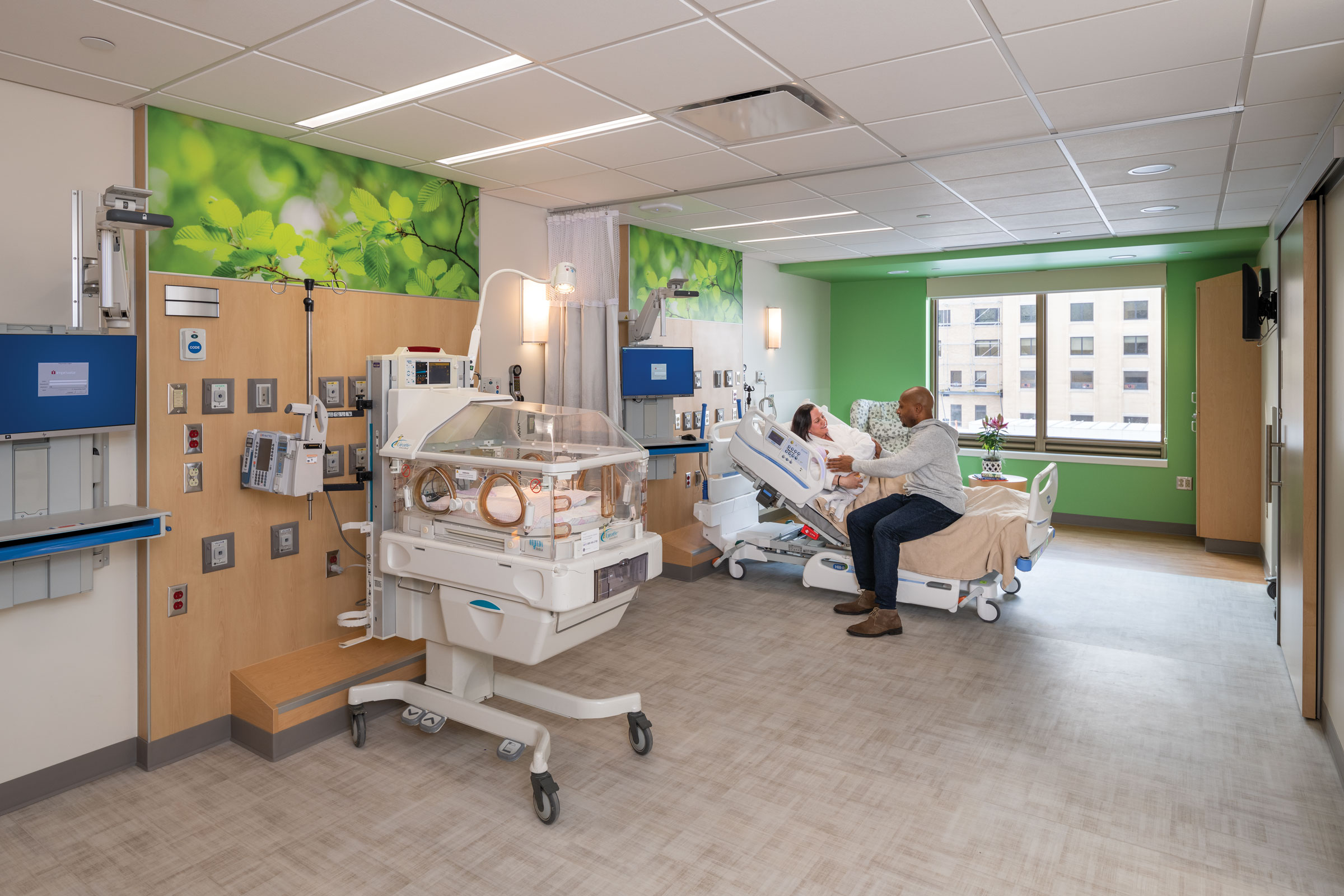
Lenga is seen at the HSHS St John’s Children’s Hospital NICU, designed by Kahler Slater. Lenga is a tandem-mounted overbed light with multiple light modes for patient comfort. Photo by Peter McCullough
Circadian lighting is another hot topic, as it’s been shown to regulate healthy sleeping patterns and promote sleep quality. “There’s a lot of conversation around circadian lighting,” Emery says. “It is important to be able to provide that technology.”
Visa Lighting is expanding its current product offering to include circadian technology. By surpassing traditional white LEDs in melanopic content, circadian lighting optimizes this natural process without increasing illuminance levels or unnatural color temperature changes.
Nielsen is excited to be part of a team that focuses on so much more than function, especially when he thinks about the way projects like the Big Lots Behavioral Health Pavilion at Nationwide Children’s Hospital in Columbus turned out. “I imagine what those spaces would look like if they had more traditional, institutional-looking fixtures, and it makes my stomach turn,” he says. “Those spaces turned out very welcoming, soft, and comfortable-looking.”
While in the past, function has been the top requirement in the industry, he hopes that’s evolving to include both function and aesthetic for an even better patient experience. “Thankfully, with the initiatives of human-centered design, that is really changing,” he says. “There’s more of a balance between the performance, comfort, and overall experience.”
Flexibility
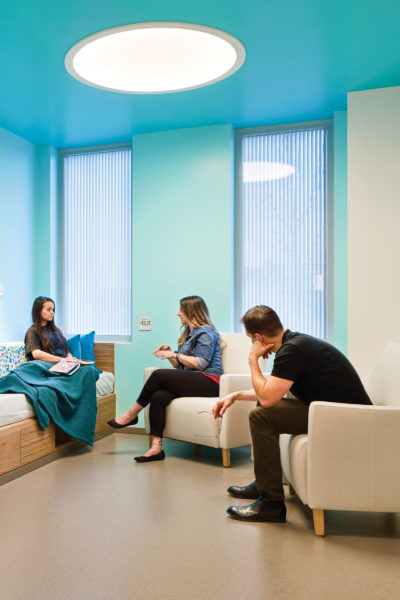
The Symmetry family of lighting from Visa Lighting enhances workplace and health care environments with pleasant, soothing ambient light. Photo by Edward Caruso
Many of Visa Lighting’s products come in various forms or can be customized. Take Symmetry, for example. The Symmetry family is used across workplace and health care environments for pleasant, soothing ambient lighting or multifunctional overbed lighting. Symmetry includes several models in 23- or 45-inch diameters—all with the same patented concave lens. Like many of their light fixtures, there are also behavioral health options.
Lenga is another overbed product with flexible use. While it was designed primarily for ICU applications, doctors in general like it because it eliminates a problem they were experiencing with other products—shadows when they leaned over a patient. This slim, overbed luminaire has dual slots made with a coextruded lens to emit exam-level light asymmetrically to center above the patient bed—while reducing glare and shadows. The Lenga family includes models for general overbed, tunability, and behavioral health.
The Lenga tandem-mounted overbed light also features multiple light modes for patient comfort and caregiver efficiency, including soft ambient lighting, higher intensity reading illumination, and directional exam lighting. “Initially that was developed to keep the center portion of the ceiling available because sometimes facilities needed that space for patient lifts,” Emery says. “That’s where tandem-mounting comes in handy. We have several tandem-mounted products, which are very useful in some overbed applications.”
One of Visa Lighting’s earliest products—Unity—has also been adopted across health care environments. It has more of a timeless look and has expanded into companion products like sconces and table lamps.
As for future designs, Nielsen expects Visa Lighting will continue to innovate, and he hopes to see even more beautiful lighting in health care. “Especially with behavioral health, there may be a misconception that there’s a tradeoff between products that are functional, beautiful, robust, and appropriate for behavioral health. What we have worked really hard on for the past several years is to create products that meet all of those criteria—impact testing, ligature resistance, and performance—in a package that doesn’t look like an institutional fixture,” he says. “Our goal has been to combine the decorative design elements with performance and other technical requirements.”

